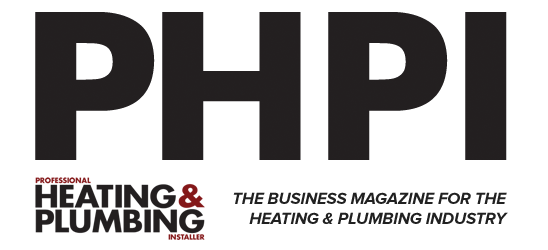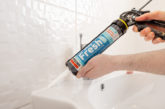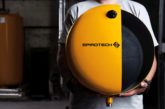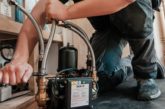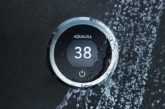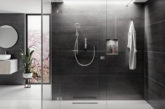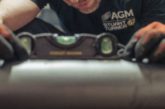
Russell Armstrong, the inventor of the hotun dry trap tundish, investigates the regulations and the use of tundishes for unvented hot water cylinders
Understanding G3, H1 and the Water Regulations is crucial for ensuring safety and compliance. They provide important and useful guidance for installers.
Overview of The Regulations
The G3 Regulation outlines the standards for the installation of unvented hot water systems. Document H gives the requirements for preventing foul air from entering the building. The Water Regulations are there to ensure that potable water is protected from contamination.
Larger unvented water heaters are popular due to their ability to deliver a good quantity of hot water. These systems are pressurised, which if not correctly installed can lead to dangerous situations.
Relevant general requirements for installations
- Safety Features G3 Regulations stipulate that unvented systems must include specific safety features to prevent risks i.e. over pressure (PRV) and/or over temperature (T/PRV). Cylinders are therefore factory fitted with such devices.
- Expansion Vessels Are essential in managing system pressure and preventing undue stress on the water heater and associated plumbing.
- Regular Maintenance Maintenance is essential for safety. It is recommended to carry out regular servicing, including testing safety devices. This is an often overlooked part of the homeowners regime and various industry associations (e.g. Hot Water Association (HWA)) are keen to help promote regular maintenance as part of good practice.
- Installation for impaired users The installer should give consideration for people with extra needs in accordance with this clause on page 23, G3:
3.55 Any discharge should be visible at the tundish. In addition, where discharges from safety devices may not be apparent, eg. in dwellings occupied by people with impaired vision or mobiity, consideration should be given to the installation of a suitable safety device to warn when discharge takes place, eg. electronically operated
Safety devices found on an unvented water heater and the use of tundishes
Inlet control group (PRV) provides protection from excess pressure coming from the cold main and should be discharged visibly, local to the cylinder.
Combined cylinder Temperature and Pressure Relief Valve (T/PRV) this does the same as above, but also protects the system from excess temperatures.
What must a tundish do?
High temperature (90-95°C), high volume (>16LPM) discharge pipework must be designed carefully. Discharging water at these temperatures and volumes can be very dangerous. A tundish must be able to cope with the full flow on that particular installation. Good practice would be to carry out a full flow test at time of installation, per the tundish manufacturers recommendations.
The tundish must also provide visibility of any discharging water, both when the water is running and more importantly after the PRV has stopped discharging.
Traditionally the subsequent D2 discharge pipework is routed through the building terminates, in a protected way, outside the building. However, this run of pipework is expensive in materials and extensive in time.
Introducing the Water Regulations and Building Regulation H to the installation
It has now become normal practice to run this discharging water to a local soil pipe. But that introduces the need to comply with the Water Regulations (to prevent contamination) and Document H1 to prevent foul air from entering the building.
This is why you will need to install a dry trap tundish that has a designated “air break to drain”. This type of product provides protection from backflow or back siphonage contamination, and the dry trap prevents odours and noxious gasses from entering the building.
How to ensure your chosen dry trap tundish prevents odours
Approved Document H does not specifically mention the testing of dry trap tundishes but states the following:
Guidance
Performance
In the Secretary of State’s view the requirement of H1 will be met if a foul water drainage system:
a. Conveys the flow of foul water to a foul water outfall (a foul or combined sewer, a cesspool, sceptic tank or holding tank);
b. Minimises the risk of blockage or leakage;
c. Prevents foul air from the drainage system from entering the building under working conditions;
Air Tightness
1.38 The pipes, fittings and joints should be capable of withstanding an air test of positive pressure of at least 38mm water gauge for at least 3 minutes. Every trap should maintain a water seal of at least 25mm. Smoke testing may be used to identify defects where a water test has failed. Smoke testing is not recommended for PVC-U pipes.
Our recommendation is to adopt the test found in clause 1.38 to ensure that your dry trap tundish is compliant.
All hotun dry trap tundishes are manufactured to this standard and are batch tested to confirm compliance.
Doing a simple compliance test on site is a good idea. The “blow” test (pressurising the D2 outlet connection side) gives a good indication of air tightness. If you can blow through the tundish then foul air would also be able to escape and it would therefore not be deemed compliant with Document H1, 1.38.
Conclusion
The hotun range of products is designed for hot water applications with the installer in mind to ensure their clients get a compliant installation using just one simple product. Another product in the hotun range is the tundish alarm unit, hotun detect. It ensures that the building user has an early alert to any unwanted T/PRV activity. This alert prevents excess wasted energy and water. A repair can then be made at the earliest signs of problems and at a convenient time to suit all.

